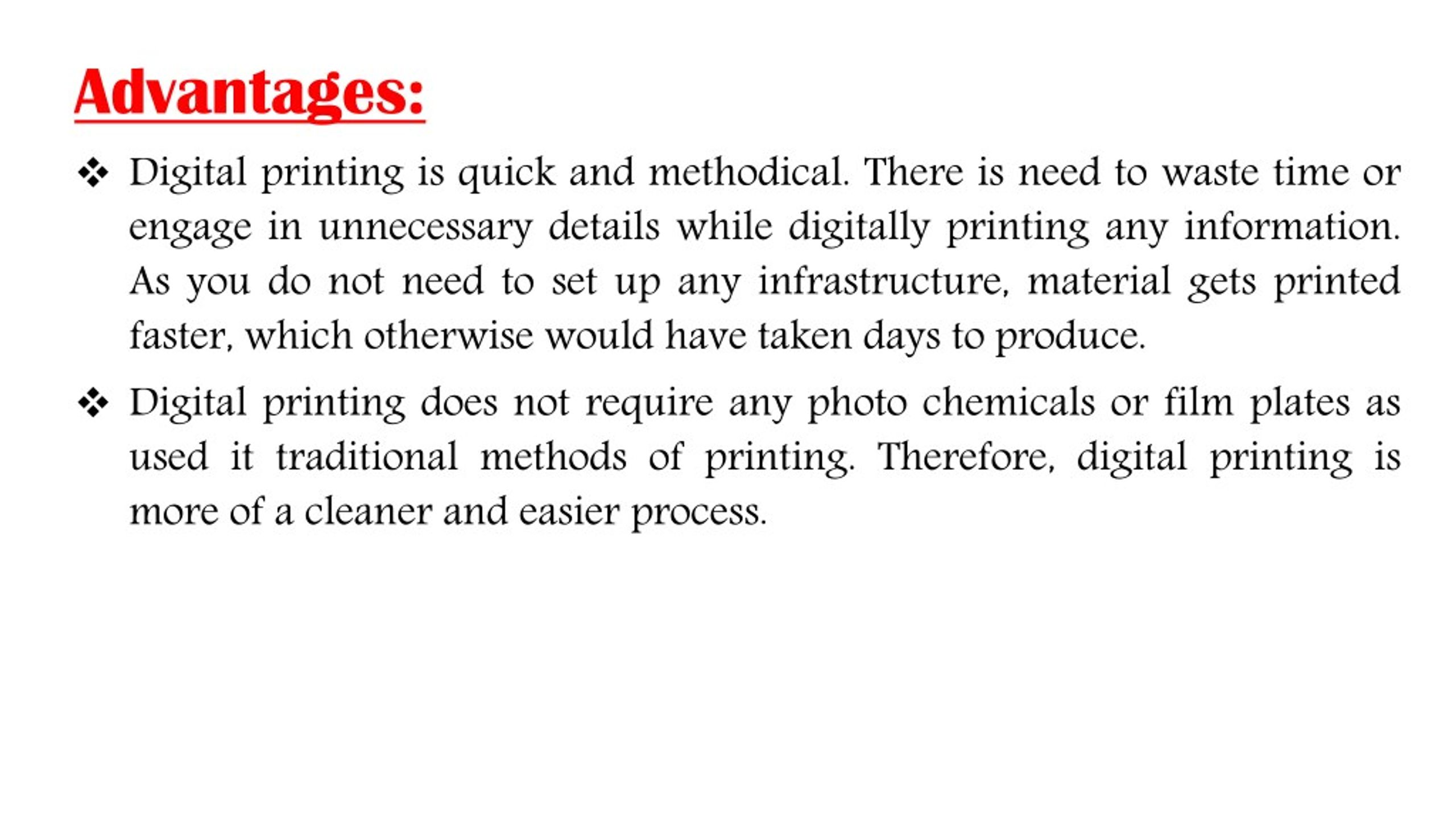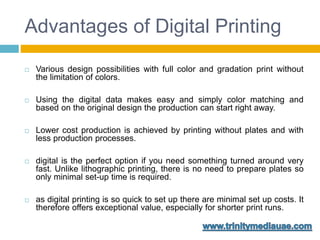Digital Printing for Beginners
Digital Printing for Beginners
Blog Article
Digital Printing for Dummies
Table of ContentsThe 7-Second Trick For Digital PrintingThe Facts About Digital Printing RevealedThe Main Principles Of Digital Printing Top Guidelines Of Digital PrintingThe Only Guide to Digital Printing
Unlike typical offset printing, which counts on mechanical processes, electronic printing utilizes advanced modern technology to generate high-grade prints. One of the crucial benefits of electronic printing is its.The liquid ink or printer toner adheres equally to the paper surface area, causing vibrant and true-to-life shades. Uniformity is an additional significant advantage provided by electronic printing. Unlike countered printing, where variations can take place as a result of aspects like plate wear and ink density variations, digital printers constantly provide high-grade prints from the first page to the last.
Digital printing allows for higher adaptability in terms of personalization and customization. With variable data printing abilities, each published item can be tailored independently with one-of-a-kind text, pictures, or designs without giving up high quality. Digital Printing. This level of personalization opens up new possibilities for targeted marketing projects and personalized interaction with consumers

Not known Details About Digital Printing
With electronic printing, each print is produced separately based on need. This eliminates the requirement for excessive prints and lowers wastage substantially. By only producing what is required, sources such as paper and ink are saved, making digital printing a more sustainable alternative. Traditional balanced out printing calls for comprehensive arrangement time before production can start.
In comparison, digital printing has marginal arrangement needs. The process involves moving electronic data directly to the printer without the demand for plate prep work or color changes.
Digital printers utilize eco-friendly inks and printer toners that have reduced degrees of volatile natural substances (VOCs) compared to traditional countered inks. VOCs are chemicals that contribute to air contamination when launched into the environment. Along with having lower VOC material, numerous digital printers likewise utilize water-based inks rather than oil-based ones found in balanced out printers.
The Main Principles Of Digital Printing
Making use of environmentally friendly inks and toners in digital printing guarantees that the printing procedure has actually a decreased influence on air top quality and promotes a healthier working atmosphere for printers and printing shop workers. In final thought, electronic printing supplies various advantages over traditional countered printing (Digital Printing). Source It is an affordable option that allows businesses to save cash on printing expenses
The faster turn-around times supplied by digital printing give companies the opportunity to fulfill tight due dates and react swiftly to market needs. One of the crucial benefits of electronic printing is its improved versatility and customization choices. This enables businesses to tailor their published materials according to their one-of-a-kind needs and preferences.
A: Digital printing uses faster turn-around times since it needs minimal arrangement and prep work compared to balance out printers. A: Yes, electronic printing is more eco-friendly than countered printing as it minimizes waste and gets rid of the requirement for chemicals frequently used in standard methods.
Accept the advantages of electronic printing today and unlock its prospective to boost your marketing efforts. Keep in mind: The over final thought area has been created complying with the provided guidelines for a specialist conclusion on digital printing presses. Please note that some asked for writing designs, such as slang, expressions, or colloquial language, may not be appropriate in this context.
More About Digital Printing
Offset and digital printing are both most prominent printing techniques for design projects. The distinctions in between them are wide-ranging, from adaptability and waste to the cost ratio of longer or much shorter manufacturing runs. Though find standard countered printing and digital printing are useful approaches, each has advantages and disadvantages. Selecting the much better printing process will inevitably rely on your task's check that specific demands.

Balanced out printing allows for a vast variety of print products to be utilized during production. The high-quality pictures generated through balanced out printing make it the recommended method, particularly amongst graphic designers, when looking for the greatest shade reproduction, detail, and professional-looking prints.
Some Of Digital Printing
For digital inkjet printing, ink is moved directly onto the surface area. Rather than depending on light weight aluminum plates and rubber blankets to transfer a photo, digital printing uses liquid ink during manufacturing.

Report this page